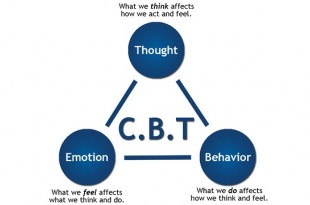Cognitive Behavioral Therapy for Social Anxiety Makes Physical Changes in the Brain
By use of brain imaging scans, Cognitive-Behavioral Therapy for Social Anxiety Disorder has been shown to make physiological changes in the brain.
Although this not the first study to find and deliver this news, nevertheless the article that appeared in the Journal of the American Medical Association in October was a major step in helping people see that cognitive-behavioral therapy literally changes brain circuitry and wiring. That is why we can say that you can "overcome" social anxiety. If you are diligent in doing cognitive-behavioral therapy for social anxiety disorder, then your brain changes. Meaning, you WILL overcome social anxiety.
This article includes brain scan images showing directly where changes are noted in the brain, before cognitive-behavioral treatment, and after going through cognitive-behavioral treatment. The article also maps out other physiological data, (e.g., blood oxygen level readings). You can see the scans showing the change that occurs in the brain as a result of a fairly bare-bones cognitive-behavioral treatment intervention.
This is an excellent article that bridges the gap between what we suspected and what we now know and can prove. Literal, physical changes occur as you do cognitive behavioral therapy for social anxiety disorder.
The journal article goes into details, and provides scans of changes in the brain.
When you learn a cognitive strategy, and learn it well, there are physical changes in your brain. If you learn one strategy well, you will remember it until the day you die. One strategy is not enough to overcome social anxiety, but the combination of all the strategies we have, both cognitive and behavioral in nature, allows us to overcome social anxiety and go on to lead a normal life, free from the restrictions that anxiety places on lives.
This article can be accessed from our citations page, which is a listing of research articles that our social anxiety program is built upon. The study is titled "Impact of Cognitive-Behavioral Therapy for Social Anxiety Disorder on the Nueral Dynamics of Cognitive Reappraisal of Negative Self Beliefs"
Our History and Our Mission
The Anxiety Network began in 1995 due to growing demand from people around the world wanting help in understanding and overcoming their anxiety disorder. The Anxiety Clinic of Arizona and its website, The Anxiety Network, received so much traffic and requests for help that we found ourselves spending much of our time in international communication and outreach. Our in-person anxiety clinic has grown tremendously, and our principal internet tool, The Anxiety Network, has been re-written and re-designed with focus on the three major anxiety disorders: panic, social anxiety, and generalized anxiety disorder.
The Anxiety Network focuses on three of the major anxiety disorders: panic disorder, generalized anxiety disorder, and social anxiety disorder.
In 1997, The Social Anxiety Association, a non-profit organization, was formed and now has its own website.
The Social Anxiety Institute, the largest site on the internet for information and treatment of social anxiety, has maintained an active website since 1998. Continuous, ongoing therapy groups have helped hundreds of people overcome social anxiety since 1994.




